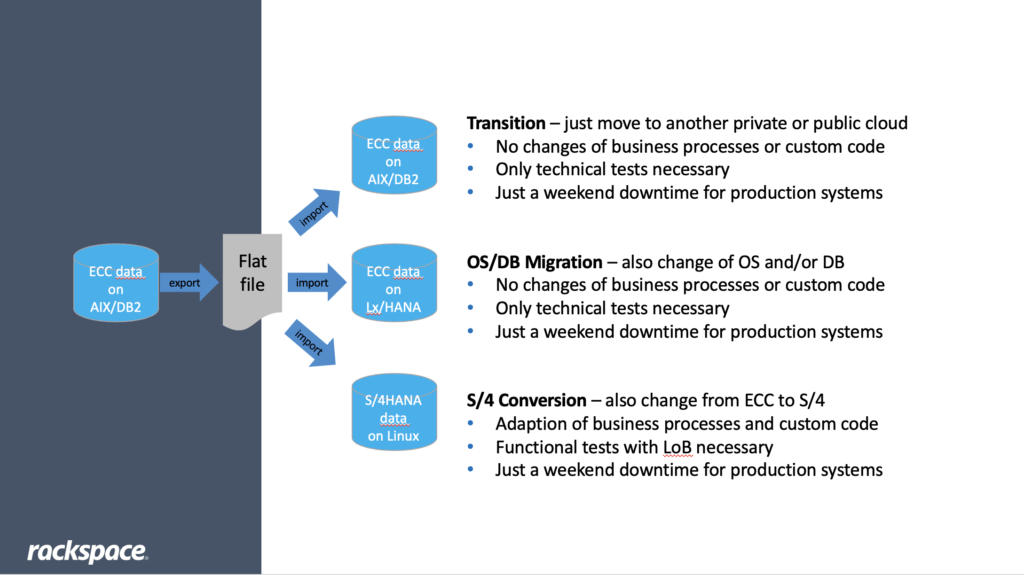

Recent Posts
Microsoft’s Agentic AI Direction for Enterprise Operations
December 18th, 2025
AI in Financial Services 2025: Turning Intelligence Into Impact
December 15th, 2025
How to Build AI-Enabled Operations and Achieve Measurable Outcomes
December 10th, 2025
Prioritize Strategy to Strengthen Your Cloud Transformation
December 8th, 2025
Modern IT Service Management is Transforming Managed Services - Part 1
December 4th, 2025
Related Posts
AI Insights
Microsoft’s Agentic AI Direction for Enterprise Operations
December 18th, 2025
AI Insights
AI in Financial Services 2025: Turning Intelligence Into Impact
December 15th, 2025
AI Insights
How to Build AI-Enabled Operations and Achieve Measurable Outcomes
December 10th, 2025
Cloud Insights
Prioritize Strategy to Strengthen Your Cloud Transformation
December 8th, 2025
Cloud Insights
Modern IT Service Management is Transforming Managed Services - Part 1
December 4th, 2025
The opportunities of HANA migrations are great — especially when the risks are mitigated by the guidance of an expert partner.
The old adage “Never touch a running system” still contains a kernel of truth. Especially with mission critical solutions like SAP’s Enterprise Resource Management solution, SAP ECC, and its Customer Relationship Management software, where the core business processes of most large enterprises are executed, concerns about downtime, data losses, time and cost to adapt custom code loom large.
High levels of customization and lack of documentation can also make SAP upgrades and migrations risky, slow and costly. Many ERP systems are a repository of decades of work, performed by hundreds of developers, across teams and vendors, many of which are no longer accessible. In many cases, documentation is outdated, incomplete or non-existent. Often a majority of customizations are obsolete but remain in the code base “just in case” they are needed.
Opportunities with SAP migration to cloud
Yet while the risks are great, the opportunities afforded by a migration to the cloud are greater — especially when those risks are mitigated by the guidance of an expert partner. A successful migration to HANA or S/4 on private or public cloud leads to lower costs and faster migrations with experienced resources, automation tools and best practices. Companies also experience reduced project risks and a reduction in cost of ownership with an optimized application infrastructure on SAP HANA.
[Read more: Don't Wait to Seek Migration Expertise for SAP HANA]
Before reaping those benefits, however, companies should understand the three basic types of SAP migration: transition, OS/DB migration and S/4HANA conversion. Some argue doing each one in order — transition to cloud, followed by a migration to HANA and finally a conversion to S/4 may be the approach with least risk.
With more than 25 years of practical experience helping to trans-migrate and convert literally thousands of SAP systems, I strongly recommend companies consider tackling all three at once. The money, time and effort saved from managing only one project instead of three can be invested in cleaning-up and optimizing custom code that benefits from HANA ad-hoc processes and S/4 HANA state-of-the-art business processes from the very first day. Before I talk about how the right migration partner can make rolling all three migrations into one possible, I want to briefly describe each one.

Transition migration: Moving SAP systems to another private or public cloud is considered a transition. Technically, the data just needs to be extracted from the source system to flat file, moved to the new environment and loaded into the new system. No SAP code will be touched, so there is no need to adapt any custom code.
For the end user, the system will look exactly as before, just faster and more flexible. The challenge of a transition is to minimize the downtime needed to move the productive system. This is where the experience and skill of SAP migration experts factor in; they will carefully split tables and max out parallelism of the available infrastructure, until the entire migration can be done during normal business downtime.
OS/DB migration: Changing the operating and/or database system is considered an OS/DB migration. Thanks to the hardware abstraction layer build into the application server by SAP in the early days of R/3, this also doesn’t touch processes or custom code. As with a transition, an OS/DB migration just exports the old operating system and data base to HANA on Linux.
The two are often combined into a trans-migration. While this can be done without touching existing business processes or custom code, smart companies will take the opportunity to clean up processes rather than just hoping the new in-memory database will accelerate old or poorly-written ABAP code. The challenge is that trying to estimate the time to fix and test code is difficult, increasing the risk that the migration project will run over time and budget.
S/4HANA conversion: The third type of migration is the most labor intensive but offers the most opportunity. A S/4HANA conversion not only updates business processes, but also the foundational data structure. That means code conversion — a highly recommended option with HANA migrations — becomes mandatory with a conversion to S/4. The difficulty here is that adapting and testing custom code can take months.
Finding the right partner
This is where the benefits of engaging with a trusted, expert partner are realized, and that’s why SAP created the DB Migration Factory, certifying companies whose SAP migration experts meet SAP’s rigorous requirements.
SAP’s DB Migration Factory, delivered by Rackspace Technology®, helps companies assess the time and effort needed to migrate applications to SAP databases. Rackspace customizes the experience by leveraging and deploying dedicated technology migration specialists, automation tools, and proven processes that help successfully migrate data and applications to SAP databases.
Our services include migration planning and ROI analysis and implementation assistance. We use proof of concept and prototyping to demonstrate capabilities and project feasibility. Additionally, we help you optimize performance with database and infrastructure testing and tuning capabilities.
Our best practices support and migration expertise also help reduce the risks and costs associated with migration projects, enabling companies to get up and running quickly. Learn more about Rackspace Application Services for SAP and how we can help you accelerate your SAP HANA migration.
Download the free e-book: Simple Strategies For A Better SAP Experience for more information.
Tags:




